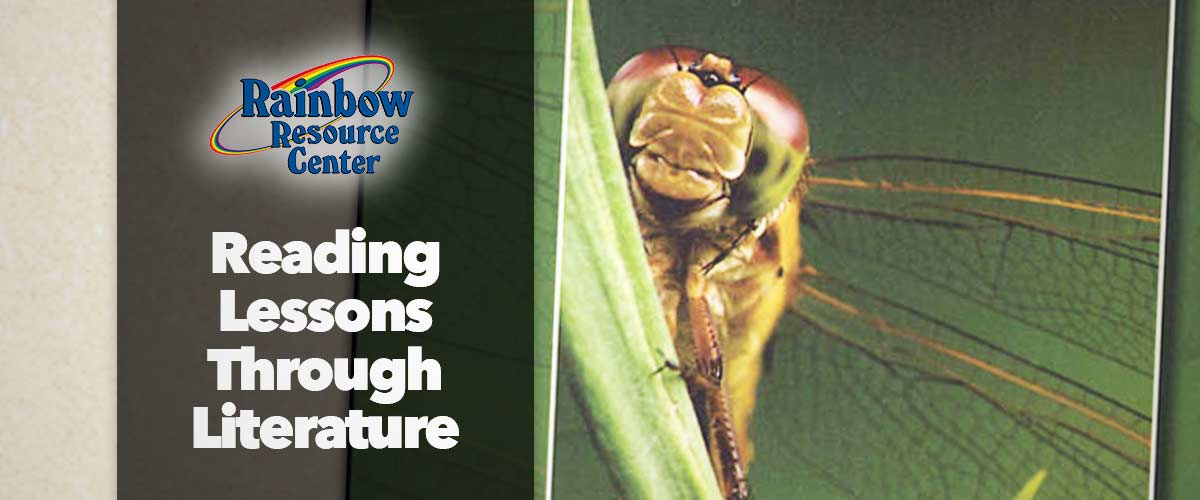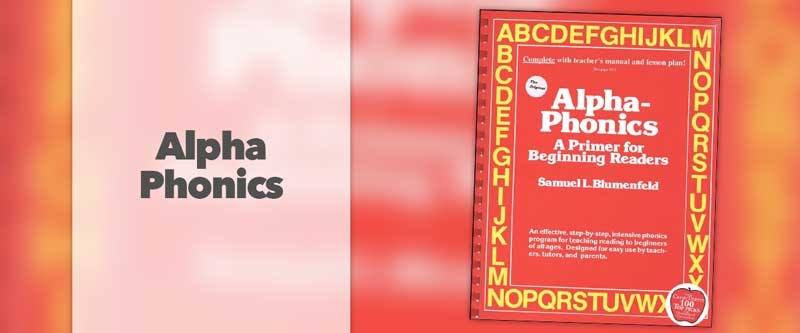What does a busy homeschooling mom of several children want when it comes to teaching reading? How about a . . . 1). Pick-up-and-go. 2). Strong, phonics-based instruction. 3). Reasonable price. 4). A focus on the beginning reader. 5). Lists of spelling words. 6). An easy-to-find set of stories to read.
Ok, then! It’s all here in Reading Lessons Through Literature. This program takes an Orton-Gillingham approach to teaching first the phonograms, then spelling, then reading. If you know much about any of the O-G programs, you know that they can be expensive, complicated to use and/or time consuming to learn. Not so with Reading Lessons. You will have to take a bit of time to read through the brief introductory material (fifteen pages) and it may take a bit more time to become comfortable with the process (I’d guess a week or so) but that’s a very minimal investment for a homeschool mom’s lifetime of teaching reading. After that, the program really is pick-up-and-go and, frankly, rather amazing in its thoroughness as well as its straight-forwardness and, not to mention, its nice, comfortable price. If you added the author’s corresponding grammar program — English Lessons Through Literature — you would have a complete language arts program.
The Text (program book) for each level is the one necessary component. Plus, you will most likely want a composition book for each student (with line width corresponding to grade or ability level) which will serve as a spelling notebook. You might want to add a set of RLTL phonogram flashcards but you wouldn’t have to. After the brief introductory instructions (identical for each RL level), there are three sections in each level Text. Section 1 – the phonograms (75 phonograms and 30 spelling rules). Section 2 – the spelling lists (which also serve as reading lists) – markings analyze the words and are explained. Section 3 – the complete (slightly edited) text of a corresponding Elson Reader.
The O-G method of teaching reading may seem a little backwards to some but it’s based on the premise that through learning the basic phonograms and spelling rules, students then have the tools needed to decipher new words. Relying on sight words (as many programs do) just forces the student to memorize those words and then (hopefully) intuit the phonograms. Instead, learn the phonograms, then add the analysis of words and teach the spelling rules (many of which are pronunciation rules, as well). The spelling lists (ten words per week in Level 1 and then 10- 15 words per week in subsequent levels) become reading lists. Spelling/reading lists are arranged around the Elson Readers stories so introducing the stories comes next (after the first 200 words have been learned). A student may read a story after he has learned all the words in the story and he is comfortable reading those words from his spelling notebook.
In each of the RLTL Texts (levels) there is a complete phonogram section – one page for each phonogram. Each page includes the phonogram, its sound, and a sample word. Phonograms can be taught straight from the Text but prepare a set of flashcards from them, if you must. Beginning students (4-5 years) should learn two phonograms per day although an older beginning student could be expected to learn as many as four per day. Phonograms are reviewed on Monday, Tuesday, and Thursday and quizzed on Wednesday and Friday. Once the first 26 phonograms have been learned, the student will begin to learn the spelling lists which are first dictated at the rate of two-three words per day. The student is creating a spelling notebook and then reading these spelling words from it daily. After the first 200 words have been learned: stories!
The Elson Readers include traditional stories, folk tales, and fables; stories about nature and festivals; and poetry, including Mother Goose rhymes and poems by poets such as Christina G. Rossetti and Robert Louis Stevenson. Progress through the Readers is in incremental steps and in RLTL is facilitated by the way the words are presented. Level 1 includes stories from the Elson Readers Primer; multi-letter phonograms are underlined; multi-syllable words are written with the syllables separated. Level 2 (Elson Readers Book 1) still has multi-syllable words written with syllables separated. In Level 3 (Elson Readers Book 2) and Level 4 (Elson Readers Book 3) words are written in the normal fashion. There are also a few editing changes in the RLTL version of these stories. Archaic animal names have been changed to reflect the more common modern names. There are some other minor changes in punctuation and wording, but the stories remain the same. The RLTL author has, however, removed many of the pictures because picture clues to the text can encourage guessing instead of practicing decoding skills. The complete text of each Elson Reader is included in the RLTL Level Book.
There are several helpful appendices in each of the RLTL Level books: prepared dictation (how/what to do after finishing the RLTL levels), spelling words in alphabetical order (words from all four levels), sample schedules, and a list of advanced phonograms.
If you are looking for an intensive phonics approach to reading that is easy to implement and won’t consume your entire homeschooling budget, this is a good place to look. If you’re clueless about the ins and outs of intensive phonics compared to other types of programs, don’t sweat it. This is a straight-forward program that will have you up and moving through those phonograms before you even know what they mean. Reading is right around the corner.





